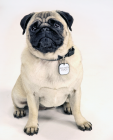Pug
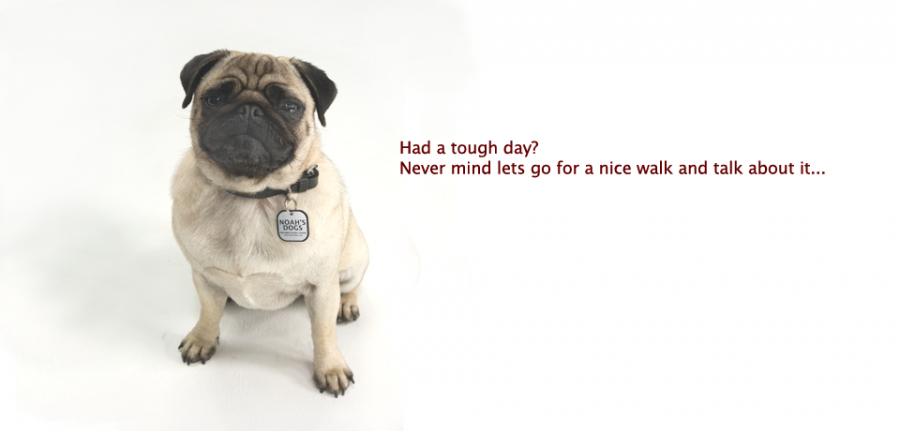
In my own words
Where are you going today? Can I come too? You know I just want to be by your side, no matter what. You’re my best friend! Why don’t we go to the park and play? It’s a great place to make friends. There are always so many people there to say hi to, and I’m really keen to run around with the Pomeranian we met yesterday. I always love meeting new people and animals, I could make friends with just about anyone!
After we go to the park, I’ll come home and play with the kids. I love to make them laugh! Maybe then we could cuddle on the sofa. You might need some earplugs in case I fall asleep though… I’ve been told I snore.
My ideal owner(s)
Families
Seniors
People who are single
People who like to be playful
What they say about me
Cuddly lapdog
Loves company
Loving
Alert and attentive
Playful
Please read on, to find out more about me, and whether I will be someone you can be happy with for the next 14 years!
Is this Pug for you?
Test your knowledge about the Pug
Information essential about the Pug
Kennel Club Group:-
Toy
Size:
Small: Weight Male 14 – 20 lbs. (6 – 9 kg) Female 14 – 18 lbs. (6 – 8 kg)
Height: Male 12 – 14” (30 – 35cm) Female 10 – 14” (25 – 35 cm)
Popularity:
Pugs have grown in popularity in the UK in recent years thanks to celebrity owners such as actress Jessica Alba, who have thrown this lovable toy breed into the spotlight. They’ve even found Hollywood stardom themselves, with Frank the Pug appearing in the Men in Black film franchise and wooing crowds with his adorable character. In 2011, their new found British popularity was made official when they entered the Kennel Club’s Top 20 most popular breeds in the UK. In America, Pugs have been popular for much longer; they have been loved stateside ever since the breed received AKC status in 1885.
Breed History:
The origins of the Pug are shrouded with mystery because the Pug is one of the world’s oldest breeds of dog, which makes tracking its lineage difficult. Some experts believe Pugs are shorthaired versions of Pekingese and were the pet of choice for royalty in the Shang Dynasty (1600 – 1046BC), others say Pugs are a small kind of French mastiff or Bulldog. Even the name ‘Pug’ causes debate and could originate from a pet name for marmoset monkeys or from the Latin pugnus, meaning “fist.”
Despite the confusion, most authorities agree the Pug’s roots are Chinese and the breed dates back to as early as 400B.C.
In the 1st Century Pugs were adored by Chinese royalty and aristocracy. Many ancient Chinese artworks include the Pug which is a testament to their popularity in the region at this time.
The appearance of today’s Pug has origins in 16th Century England, when the earliest Pugs were referred to as Dutch Mastiffs, despite bearing no relation to the Mastiff breed. Historical paintings show Pugs much as we know them now, with a black mask and curly tail, however their ears were cropped. This practice involved cutting off the dogs ears close to the head for aesthetic reasons. This was outlawed in the 1800s. The Whilloughby strain of Pugs was developed in England by the Whilloughby family. Dating from 1842 when the Whilloughby’s acquired two dogs and successfully bred them, Whilloughby Pugs were a silver-fawn colour with a dark trace along its back, from the base of the head to its tail. After the British invasion of China in 1860, many more Pugs were introduced to Europe. Thanks to their happy go lucky nature and wonderful companionship, their popularity has been growing ever since.
Character:
Your Pug is a friendly, non-aggressive dog which loves to play, making them perfect for families. Their gentle, fun-loving nature is ideal for children who want a cuddly companion. Pugs have a stubborn streak which you need to look out for. Your Pug is not only intelligent but they know what they want and they are resolute in finding a way to get it. Pugs love to meet new people and get on well with everyone; it doesn’t matter if they’re a family or single, young or old, human or animal – the Pug wants to be friends! Just don’t expect a guard dog, your Pug may be strong for his size, but he’s a lover not a fighter. Loyal and eager to please, your Pug loves company and will follow you everywhere. Your Pug is a constant companion who is always by your side.
Temperament:
The Pug’s temperament is his most loved and sought after feature. Pugs are just full of love! They may have a favourite owner, but the Pug is not a one person dog. They want to make friends with everyone. This sociable breed gets on great with other animals too and lives happily with other pets. Just beware; the Pug can become jealous if they feel as though your affections are being devoted to someone else. The Pug needs plenty of cuddles, petting and play time to keep it happy, and prefers to be in the company of others than left on its own; though they are intelligent enough to find their own fun when necessary. The playful temperament of the Pug means they are great with children, as they are patient and gentle. Their strong bodies ensure they are a tough breed that can withstand the rough play of young children. Once they’ve had enough you won’t find it easy to convince a Pug to continue playing – they can be stubborn. Though the Pug is a charming host and usually greets guests with a cheerful welcome, they make good watchdogs due to a healthy bark which contradicts its size.
Conformation:
A well-bred Pug has a typically square shape and stout, muscular body with a broad chest. The legs are strong and straight. The Pug’s head is large with extensive wrinkles and his eyes should be a very dark colour, large, round and pronounced. The muzzle is short and blunt and the mask should be dark black. The ears are small and come in two distinct shapes, the rose and button. The Pug’s tail is tightly curled up over the hip and falls to one side; a double curl is particularly desirable. The Pug’s fine, short coat is smooth and silky.
Colour:
The coat of the Pug comes in black, silver, fawn and apricot.
Training:
Pugs love to please their owners and are highly intelligent. They respond well to positive encouragement rather than punishment. Use reward based training as harsh methods, raised voices and angry words will make the Pug stressed, hurt their feelings and hinder their training.
Care:
The Pug’s short, blunt snout means it is unable to cool itself like other breeds can, through panting. This means that they can overheat, which is very dangerous and could even be fatal. Pugs are unable to tolerate extreme heat and humidity, so if you live in a hot country the Pug may not be a suitable breed for you. They are also not well suited to the cold, as they are more likely to pick up colds and viruses. An ambient temperature is best for the Pug. Their flat muzzle also means that they can be prone to snoring and wheezing, as fluid can become trapped under their palette. However this usually sorts itself out. Make sure you clean the Pug’s many facial wrinkles with a damp lint-free cloth on a regular basis, as they can be a harbour for dirt and germs. The Pug’s short coat is prone to shedding, so some grooming is needed though the Pug is generally low maintenance when it comes to taking care of its coat. If there’s one thing which Pugs love as much as their owners, it is food! They are food motivated so you have to be very careful not to over feed your Pug as they will become obese. Control their diet and provide daily exercise to maintain a healthy weight and ensure your dog has a happy, long life. Pugs live well in apartments, provided they get enough exercise. Lots of play, coupled with daily walks should do the trick!
Health:
The lifespan of a healthy Pug is 12-14 years, however they are prone to a number of health concerns. Due to their short muzzles, Pugs have a tendency to develop breathing issues. The Pug’s breathing passageways are compacted which makes breathing difficult and means they are unable to regulate their temperature by panting. Their normal temperature lies between 38 – 39°C but once it reaches 41°C they need immediate attention and require urgent help to cool down. At 42°C, their condition may become critical – the internal organs begin to break down, causing long term health issues or even death. Pugs can also fall victim to Necrotizing Meningoencephalitis (NME), also known as Pug Dog Encephalitis’, an inflammation of the brain. There is no cure for this condition and dogs usually die or are euthanised a few months after the onset of symptoms. As NME is thought to be inherited, buying from a responsible breeder who has full details of your puppy’s lineage is vital. Pugs can also be prone to infections in the ears, nose and mouth. This is usually due to skin infections beginning in the Pug’s face wrinkles, which then spread. Avoid this by keeping their wrinkles clean and dry. As Pugs are prone to obesity, provide your Pug with a healthy diet and regular exercise. Other health concerns to look out for are hip dysplasia, elongated palate, Brachycephalic syndrome, stenotic nares, patellar luxation, Legg-Perthes Disease, entropion, Keratoconjunctivitis Sicca (KCS) and Hemivertebra. To increase your chances of getting a healthy dog make sure that you choose your breeder carefully.
You may also like:
Pugs and their owners »

If you like Pugs, you may be interested in breeds of the same size »
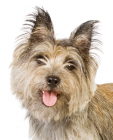
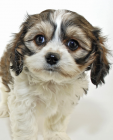
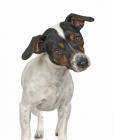
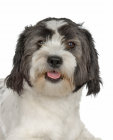
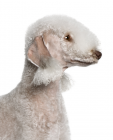
If you like Pugs, you may like other breeds with similar characteristics »
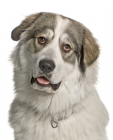

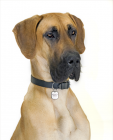
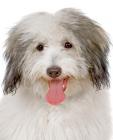

If you like Pugs, you may be interested in these other toy dogs »

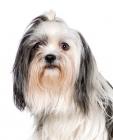
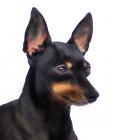
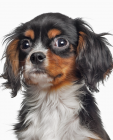
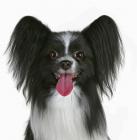
Advice on choosing your breed »
Find an animal shelter or rescue home where a Pug is waiting for a new home »
The following grid gives a fast track review which covers all breeds. You can apply it to help you decide if a Pug is suitable for you, the environment where you live, your personality and your lifestyle. On the grid, 1 = strongly disagree, and 5 = strongly agree. For example, if you are looking for a dog that is suitable for a city apartment, look down the list under ‘Environment’ and you will see that Pugs are perfect for urban living, scoring 5. If you are looking for a dog that prefers a hot climate, look at the same list and you’ll see a Pug would not be suitable, scoring just 1. You might like to save or print off this section and keep it for reference while you check some other breeds before making your choice.
Be the first to rate this breed »
|
*PLEASE NOTE: All our breed profiles are general, and all dogs are individuals. Always talk to the breeders and meet the owners you are buying from. Try to meet the dog and its parents if it is a puppy in their home environment.








